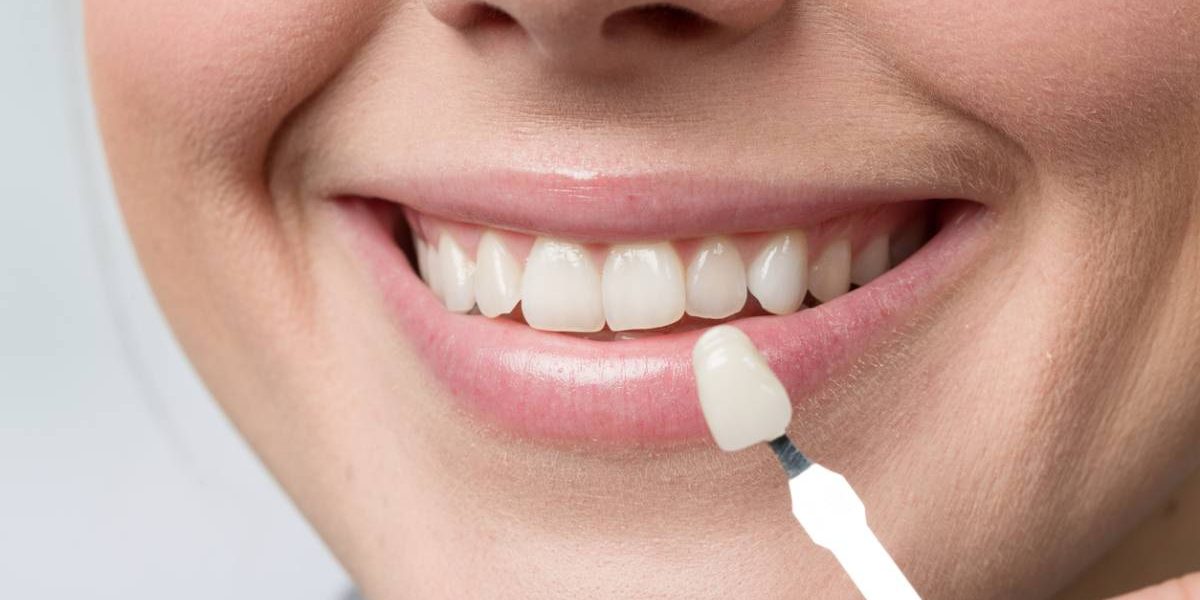When considering cosmetic or restorative dental treatment, it’s important to understand the different options available and how they serve distinct purposes. E-max veneers and E-max crowns are two commonly used solutions that share the same high-quality material but are applied differently depending on the patient’s dental needs. For patients looking into high-end dental care, especially those researching E-max Veneers in Dubai, understanding the difference between veneers and crowns is essential in choosing the right procedure for a long-lasting, natural-looking smile.
What Are E-max Veneers:
E-max veneers are ultra-thin shells of lithium disilicate ceramic, designed to cover only the front surface of the teeth. They are primarily used for cosmetic purposes, correcting issues like discoloration, minor misalignments, chipped teeth, or uneven shapes. Because they are thin and require minimal tooth preparation, E-max veneers are an ideal choice for patients with healthy teeth who want to enhance the appearance of their smile.
What Are E-max Crowns:
E-max crowns, on the other hand, are full-coverage restorations that completely encase a tooth. Also made from lithium disilicate, E-max crowns are used for both cosmetic and restorative purposes. They are commonly placed on teeth that are severely decayed, broken, root canal treated, or structurally compromised. Crowns provide strength, protection, and an aesthetic solution for damaged or weakened teeth.
Purpose and Functionality:
The main difference between veneers and crowns lies in their purpose. Veneers are used primarily for aesthetic enhancement, while crowns are necessary when a tooth needs full structural support. Crowns restore function by reinforcing compromised teeth and allowing patients to chew without discomfort. Veneers, by contrast, are best suited for smile makeovers where the tooth is still fundamentally healthy.
Preparation Requirements:
E-max veneers require minimal tooth reduction, typically around 0.3 to 0.5 mm, preserving most of the natural tooth structure. In contrast, E-max crowns involve more extensive reshaping, as they must fit over the entire tooth. This process often requires removing 1.0 to 2.0 mm of enamel, especially in cases where the tooth is damaged or previously restored. This makes veneers the more conservative option when applicable.
Aesthetic Considerations:
Both E-max veneers and crowns offer excellent aesthetics due to their natural translucency and color-matching capabilities. However, veneers provide a slightly superior level of naturalness when used on front teeth because of their ultra-thin structure and light diffusion properties. Crowns are still highly aesthetic but may appear slightly more opaque depending on the thickness required for durability.
Strength and Durability:
E-max crowns are generally stronger than E-max veneers because they cover the entire tooth and offer comprehensive protection. Crowns are designed to withstand greater biting and chewing forces, making them ideal for molars or teeth under high pressure. Veneers are also strong, but their strength is more limited due to the minimal surface area they cover. Both restorations can last 10–20 years with proper care, but crowns tend to edge out in longevity for high-stress applications.
Cost Differences:
The cost of E-max veneers and crowns can vary depending on the clinic, complexity of the case, and geographic location. In general, crowns tend to be slightly more expensive because of the additional material, time, and preparation involved. Clinics offering E-max Veneers in Dubai often provide customized treatment plans, with clear cost structures to help patients choose the most appropriate option for their needs and budget.
Indications for Each Option:
E-max veneers are ideal for patients who have cosmetic concerns but retain healthy tooth structure. Common indications include stained teeth, small gaps, chipped edges, and minor misalignment. E-max crowns are indicated for teeth that are structurally compromised—due to decay, fractures, or previous large restorations—and in need of full coverage to restore function and appearance.
Procedure Time and Recovery:
Both procedures typically require two dental visits: one for preparation and impressions, and another for placement. In some advanced clinics, same-day treatment using CAD/CAM technology is available. Recovery from veneers is usually quicker due to the minimal invasiveness, while crowns may involve slightly more post-procedure sensitivity, especially if the tooth has been extensively reshaped or treated beforehand.
Long-Term Maintenance and Care:
E-max veneers and crowns both benefit from similar care routines, including regular brushing, flossing, and dental checkups. Patients should avoid using their teeth to bite hard objects or open packaging. Night guards may be recommended for patients who grind their teeth. With proper hygiene and periodic professional cleanings, both restorations can maintain their integrity and appearance for many years.
Final Thoughts:
Understanding the difference between E-max veneers and crowns is key to making the right decision for your dental health and aesthetic goals. While both use the same premium material and offer excellent results, they serve different purposes: veneers enhance appearance with minimal intervention, while crowns provide structural support for weakened teeth. If you’re considering E-max Veneers in Dubai, a consultation with a skilled cosmetic dentist can help determine whether veneers or crowns—or a combination of both—will deliver the results you’re looking for.












